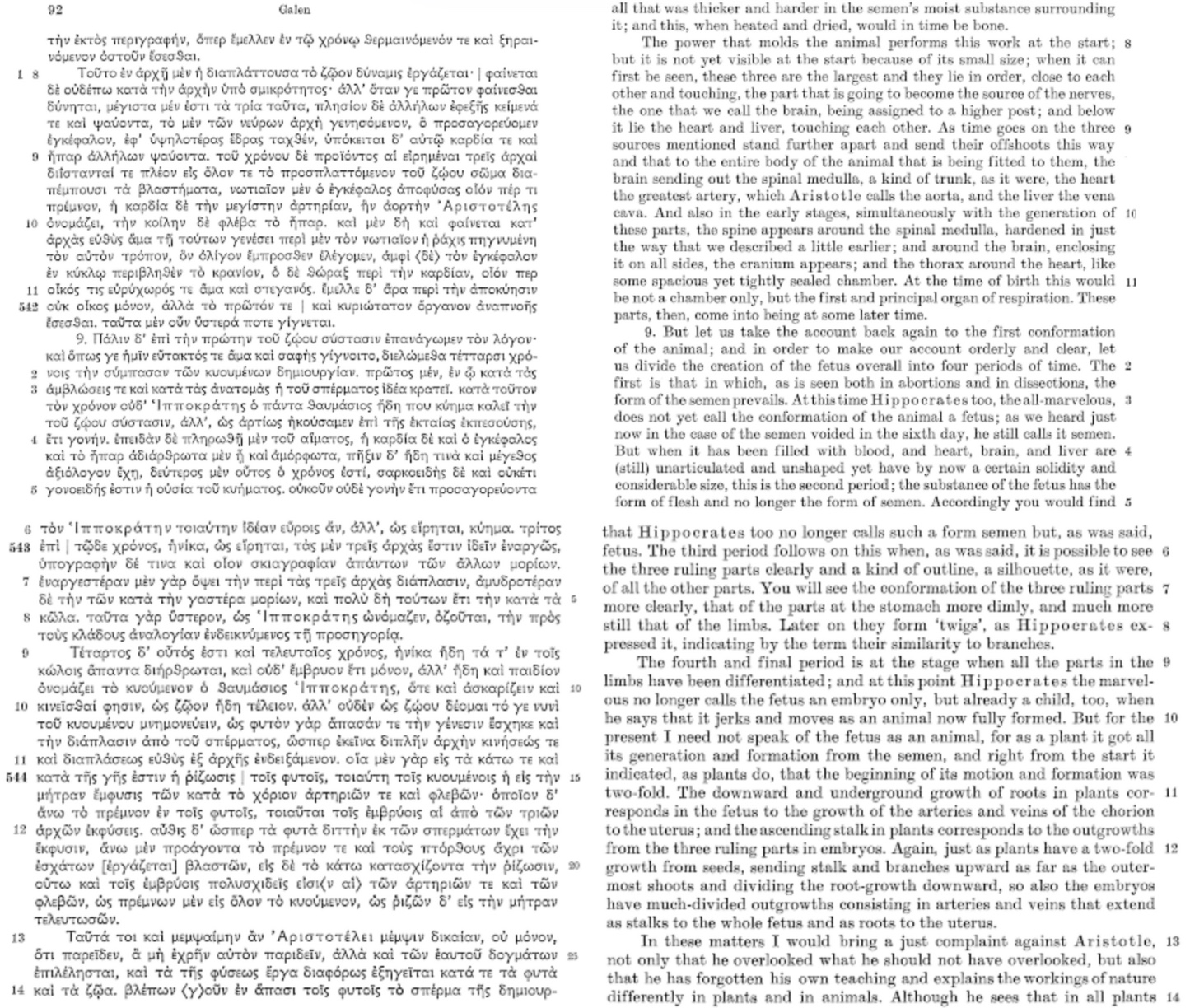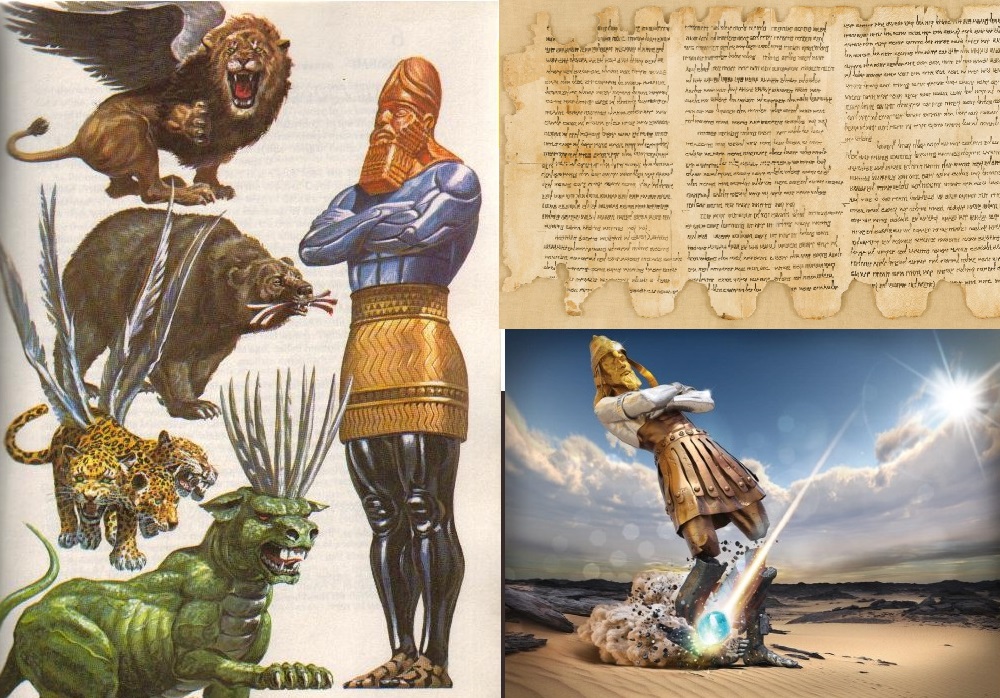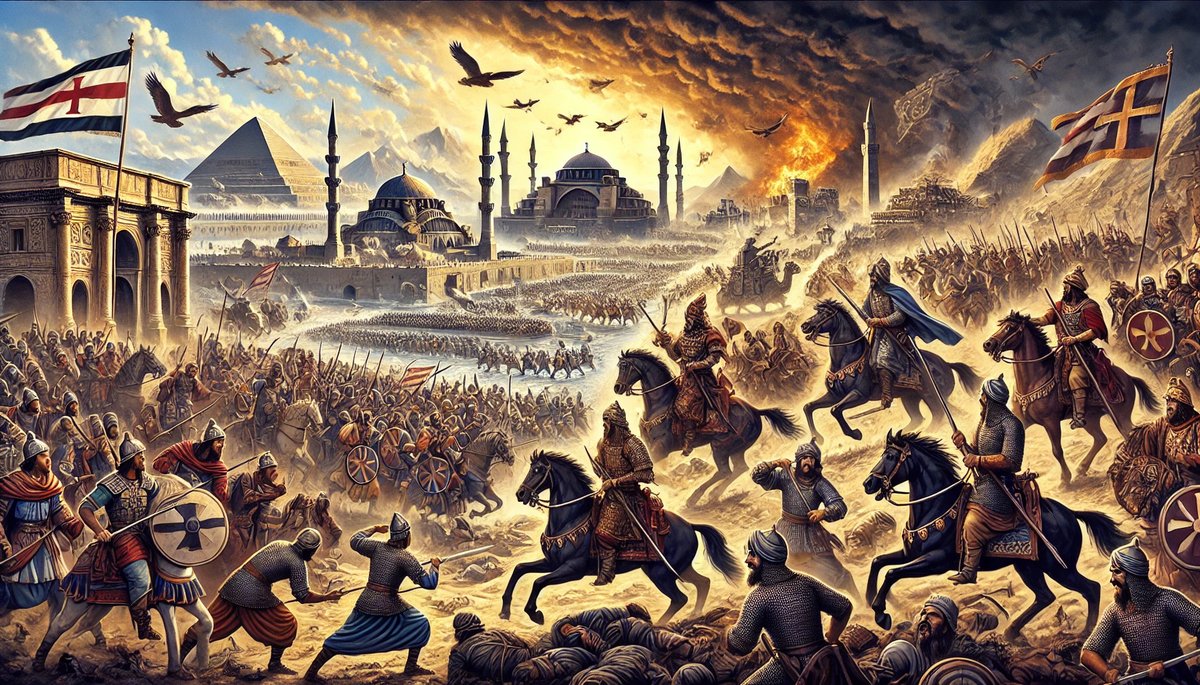The Quran and Modern Science: Evidence of Scientific Miracles or Concordism?
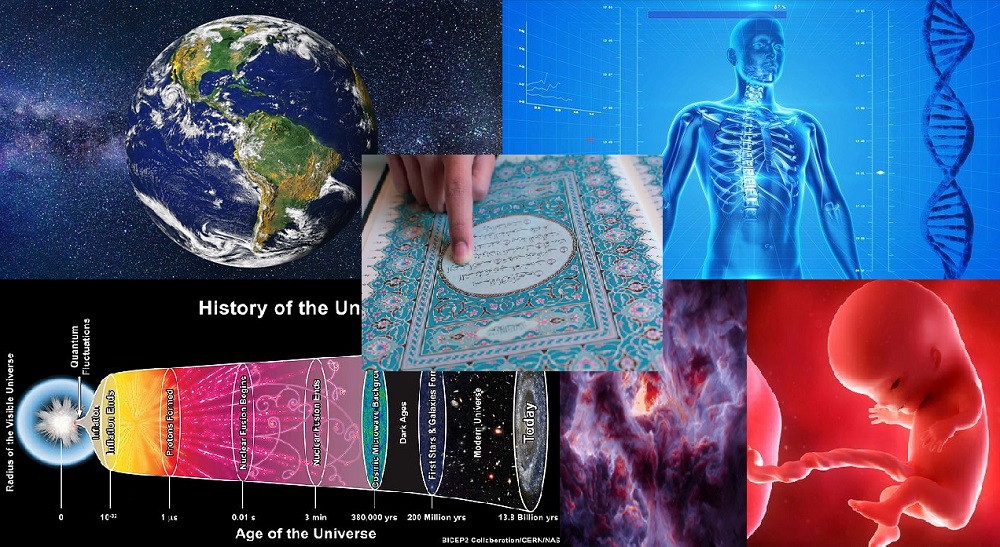
This is a comprehensive study of the nature of scientific miracles in the Quran and a review of the primary objections.
In a world that has become so materialistic it denies its own Creator, the Quran offers a different perspective. It tells us that the author of the Quran is also the author of the universe. The same God who reveals Himself through His creation also reveals Himself through His word.
This is no ordinary claim. The Quran itself demonstrates its divine origin. This article delves into one of the most recent aspects of this demonstration of truth. We start by outlining the background of the so-called “scientific miracles of the Quran” and addressing the main claims made by detractors. Next, we will detail the primary scientific facts cited in the Quran, tackling the objections related to these facts.
The scientific miracles of the Quran and Concordism
On the term “Concordism.”
Among the inaccurate definitions of the scientific miracles of the Quran circulating online are the following:
“Islamic Concordism is a current of Islam today, which defends that ‘all scientific knowledge, including the most recent discoveries, is contained in the Quranic text.'”
This definition reveals a glaring ignorance of the Quranic text and its significance in the Muslim faith.
The word Concordism should not be used in this context. Historically, Concordism is a term used to describe Christian attempts to reconcile its initial positions with scientific facts. This trend began at the end of the 19th century when the church retracted positions held for centuries (such as creation in literal days, the flat Earth) by asserting that a proper interpretation of the Bible does not contradict scientific truths.
It is natural to call this “Concordism” in the biblical context, but why use it in the context of the Quran? There has never been any discord between the Quran and science. Islam is the only religion that has founded a civilization based on knowledge and science; all other religions have been welcomed by existing civilizations (Christianity by the Roman civilization, Confucianism by the Chinese civilization, etc.). In his book “Islam: The Misunderstood Religion,” James A. Michener wrote in 1954:
Many Westerners, accustomed by their history books to believe that Muslims were barbarous infidels, find it difficult to comprehend how profoundly our intellectual life has been influenced by Muslim scholars in the field of science, medicine, mathematics, geography and philosophy. Crusaders who invaded the Holy Land to fight Muslims returned to Europe with new ideas of love, poetry, chivalry, warfare and government. Our concept of what a university should be was deeply modified by Muslim scholars, who perfected the writing of history and who brought to Europe much Greek learning
Islam the misunderstood religion James A Michener
The Quran and scientific knowledge
The second allegation is: “Who claims that all scientific knowledge, including the most recent discoveries, is contained in the Quranic text?”
This is a fallacious argument of A straw man fallacy type (a favorite method of Islam’s detractors): you make Muslims say things they haven’t said and then argue about them.
This is a surprising claim for a Muslim to make. Muslims agree that the Quran is a book of guidance, not a science textbook, and it is not meant to contain scientific knowledge.
In reality, this is yet another projection of a Christian issue onto a topic that concerns Islam, a trend often seen in Western thought, which struggles to move beyond the worldview of religion shaped by centuries of the church. During the Middle Ages, the church asserted that all knowledge necessary for humanity could be found in the Bible. While the church persecuted scientists for suggesting a round Earth, this concept was already established as a scientifically proven fact and widely accepted in the Islamic world.
However, it is fair to say that the Quran has encouraged Muslims to reflect on the world around them. It has inspired Arabs to move away from the myths they once adhered to in order to gain knowledge and rely on a solid and logical method of reasoning. Hartwig Hirschfeld, MRAS orientalist, bibliographer, and British educator, wrote in 1901:
We must not be surprised to find the Quran regarded as the fountainhead of all the sciences. Every subject connected with heaven or earth, human life, commerce and various trades are occasionally touched upon ,and this gave rise to the production of numerous monographs forming commentaries on parts of the holy hook. In this way the Quran was responsible for great discussions, and to it was also indirectly due the marvellous development of all branches of science in the Muslim world. — This again not only affected the Arabs but also induced jewish philosophers to treat metaphysical and religious questions after Arab methods.
Hartwig Hirschfeld New researches into the composition and exegesis of the Qoran Page 9
Do the Scientific Miracles of the Quran Prevent Muslims from Seeking Knowledge?
Another allegation states:
It obfuscates Muslims today, making them believe that science, which is supposed to be methodical, to have its systematic approach, experimental, empirical, theoretical, etc., is not necessary. We can simply go and look in the Quran, and find these scientific truths there.
Nidhal Guessoum, in an interview with Oumma.com, made this claim.
In his book “Why Muslims Lagged Behind, and Others Progressed,” Prince Chakib Arslan details the reasons why Muslim nations have fallen behind in civilization, even as their influence illuminated the world during the Middle Ages. Under the title “The Loss of Islam Between the Rigid and the Ungrateful,” Arslan asserts that Muslims are caught between two currents:
- The first current is that of the rigid (الجامدون), who refuse all progress and, due to their ignorance, reject anything that comes from others (such as Europeans or Japanese).
- The second current is that of the ungrateful (الجاحدون), who have an inferiority complex towards the West and wish to “modernize” Muslims by detaching them from their history and identity.
The allegation in question—that the topic of scientific miracles leads Muslims to avoid seeking knowledge—illustrates the struggle between these two currents, with the ungrateful addressing Muslims as if they belong entirely to the rigid current.
Only a Rigid fool would dare tell Muslims today not to learn the sciences and to go and find them in the Quran, and only an Ungrateful, Uninformed would accuse Muslims of this kind of thinking because they claim that the Quran contains allusions to scientific truths.
Reading the Quran through the lens of contemporary knowledge is not a new phenomenon in this century. Muslims have consistently been able to read the Quran, comprehend it, and simultaneously illuminate the world with their scientific achievements and knowledge.
‘Europe was darkened at sunset, Cordova shone with public lamps; Europe was dirty, Cordova built a thousand baths; Europe was covered with vermin, Cordova changed its undergarments daily; Europe lay in mud, Cordova’s streets were paved; Europe’s palaces had smoke-holes in the ceiling, Cordova’s arabesques were exquisite; Europe’s nobility could not sign its names, Cordova’s children went to school; Europe’s monks could not read the baptismal service, Cordova’s teachers created a library of Alexanderian dimensions.’ .
(Victor Robinson, The Story of Medicine, New York, 1936, p. 164)
So, what are the scientific miracles of the Quran?
Proofs of Prophecy
The scientific miracles of the Quran are part of what Muslims refer to as “proofs of prophecy,” which comprise the body of evidence demonstrating that the Prophet Muhammad (ﷺ) is indeed a messenger of God. Faith in Islam is based on logic and reasoning, and Muslims have long compiled proofs of prophecy. Some works list over a thousand proofs, which can be categorized as follows:
- Material miracles performed by the Prophet Muhammad(ﷺ): These are miraculous events witnessed during his lifetime.
- Prophet Muhammad(ﷺ) ‘s realized predictions: These include accurate predictions about future events that came true.
- The miracle of the Quran: The miracle of eloquence and the challenge to the Arab nation, especially considering the Prophet Muhammad (ﷺ) was illiterate.
- The historical miracle of the Quran: The Quran recounts facts about ancient nations that would have been impossible for an illiterate man to know.
- The future-telling miracle of the Quran: The Quran contains several instances of accurately predicting future events, serving as proof of its divine origin.
- Prophecies about the arrival of Islam: The message of Islam was announced by prophets who came before Muhammad(ﷺ).
- The values of the Prophet Muhammad(ﷺ): He exemplified the perfect person with his character and morals.
- Prophet Muhammad(ﷺ)’s behavior in certain situations: His actions in specific situations where a liar would have been exposed.
- The purity of Islamic teaching: Teachings that correspond to man’s basic nature and respect elementary logic.
The scientific miracles of the Quran are a recent addition to these themes. As humanity has achieved remarkable scientific progress over the last two centuries, God has provided signs in His book for those endowed with intelligence (and honesty) to strengthen their conviction and supplement the numerous proofs that already exist.
Types of Scientific Facts Cited in the Quran
There are three aspects to what can be called “scientific miracles”:
- A scientifically significant fact that the Quran precisely and accurately describes: these details were entirely unknown at the time and were only uncovered later through scientific advancements.
- An erroneous belief that was widely accepted at the time, but for which the Quran presents the accurate truth: These instances demonstrate that the Quran supported the true fact, even when it contradicted the popular misconceptions of the era.
- Cases where there were differing popular opinions, and the Quran supports the correct view: In situations with multiple perspectives, the Quran aligned with the accurate understanding.
People usually associate the subject of scientific miracles with the first point, but the other two points are equally important. The fact that the Quran did not adopt the popular misconceptions of the time is also proof of prophecy. In his book: “Goded (Glorified),” Lawrence D. Brown states:
The Qur’an does not imitate the Bible by assigning dates or disorder to the sequence of Creation. Considering the number and primacy of such biblical narratives, the assertion that the Qur’an was in part copied from previous scriptures looks sadly suspect. Were biblical scriptures recited from the beginning of the collection of books, the first scripture Muhammad would have heard would have been the early chapters of the book of Genesis. The fact that these verses are not carried over into the Qur’an speaks strongly against such a theory of copying.
To search the Qur’an for statements that, like those of the Bible, conflict with archeological, historical, or scientific evidence, proves frustrating. Muslims hold that no such conflicts exist, for they claim the Qur’an conforms perfectly not only with the sciences, but also with all fields of human knowledge, as should be expected of a book of God. That claim begins to look pretty good when the scientific evidence is examined
Laurence B Brown : God Ed
The Quran and Science: Beware of Misinterpretation
Unfortunately, there are two common abuses of scientific signs in the Quran :
- The first abuse is the exaggerated interpretation of a verse to make it align with a scientific truth. This approach undermines the principles of Quranic exegesis (Tafsir), which stresses the importance of understanding verses within their proper context and according to their intended meaning. Over-interpreting or stretching the meanings of verses can lead to incorrect conclusions and damage the credibility of authentic scientific miracles in the Quran. It also gives detractors of Islam the chance to discredit all scientific miracles through generalization, highlighting these forced interpretations as flaws.
- The second abuse involves interpreting the verses of the Quran in light of facts that are not scientifically proven or that remain unverified theories. This practice is risky because science is always evolving, and theories considered valid today might be disproven tomorrow.
Both misinterpretations undermine the integrity of Quranic exegesis and can lead to confusion and misinformation. It is crucial to approach the Quran with a balanced perspective, acknowledging its spiritual and moral guidance while being careful not to align it too closely with changing scientific theories.
The Quran and the creation of the universe
The Big Bang
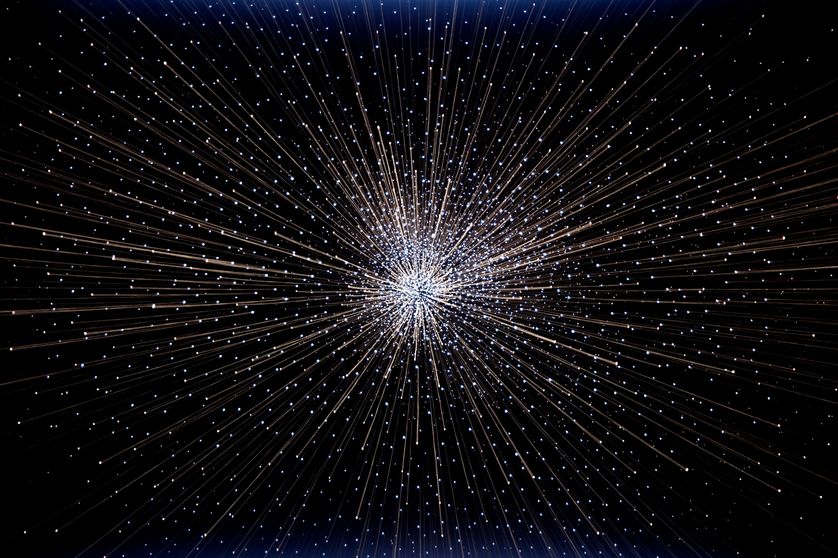
The Big Bang theory is a cosmological model that describes how the universe developed from an initial state of extremely high density and high temperature, offering a comprehensive explanation for a wide range of observed phenomena.
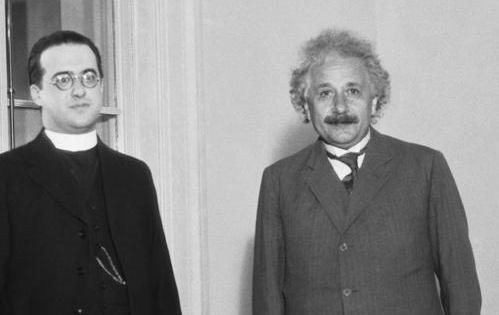
One hundred twenty years ago, the prevailing scientific belief was that the universe had always existed, eliminating the need for a Creator. However, Einstein’s “field equations” suggested that the universe expanded like a balloon. To adhere to the static universe hypothesis, he introduced a cosmological constant (Λ) but later removed it from his equations. Belgian astronomer Georges Lemaître then proposed that this expansion must have originated from a single point, leading to the Big Bang theory, which is now fundamental to our understanding of the universe’s origin.
Interestingly, a similar concept is described in the Quran :
The Arabic word “Ratk,” translated in this verse as “to form a compact mass,” refers to things that are close together, solid, invulnerable, and united into a solid mass, according to Arabic dictionaries. It signifies a state in which two different pieces come together to form a single entity. The verb “to separate” is translated from the Arabic verb “Fatk,” which means to split an object that is in a state of “Ratk.” For example, the germination of a seed and the emergence of its buds are captured by this verb.
In the verse, heaven and Earth are initially described as a united entity in a state of “Ratk.” They are then separated [fataqa], with one emerging from the other. This description reflects the early moments of the Big Bang when all the matter in the universe was concentrated in a single point. This point then exploded violently, resulting in the separation and expansion of matter.
For fourteen hundred years since the Quran was revealed, skeptics have struggled to understand its verses. However, with scientific advancements, we can now interpret these verses in a new light, helping to piece together the cosmological puzzle. The miraculous nature of the Quran lies in the profound knowledge it contains, showing that its message is just as relevant to scientists in modern laboratories as it was to Bedouins in the desert centuries ago.
The expansion of the universe
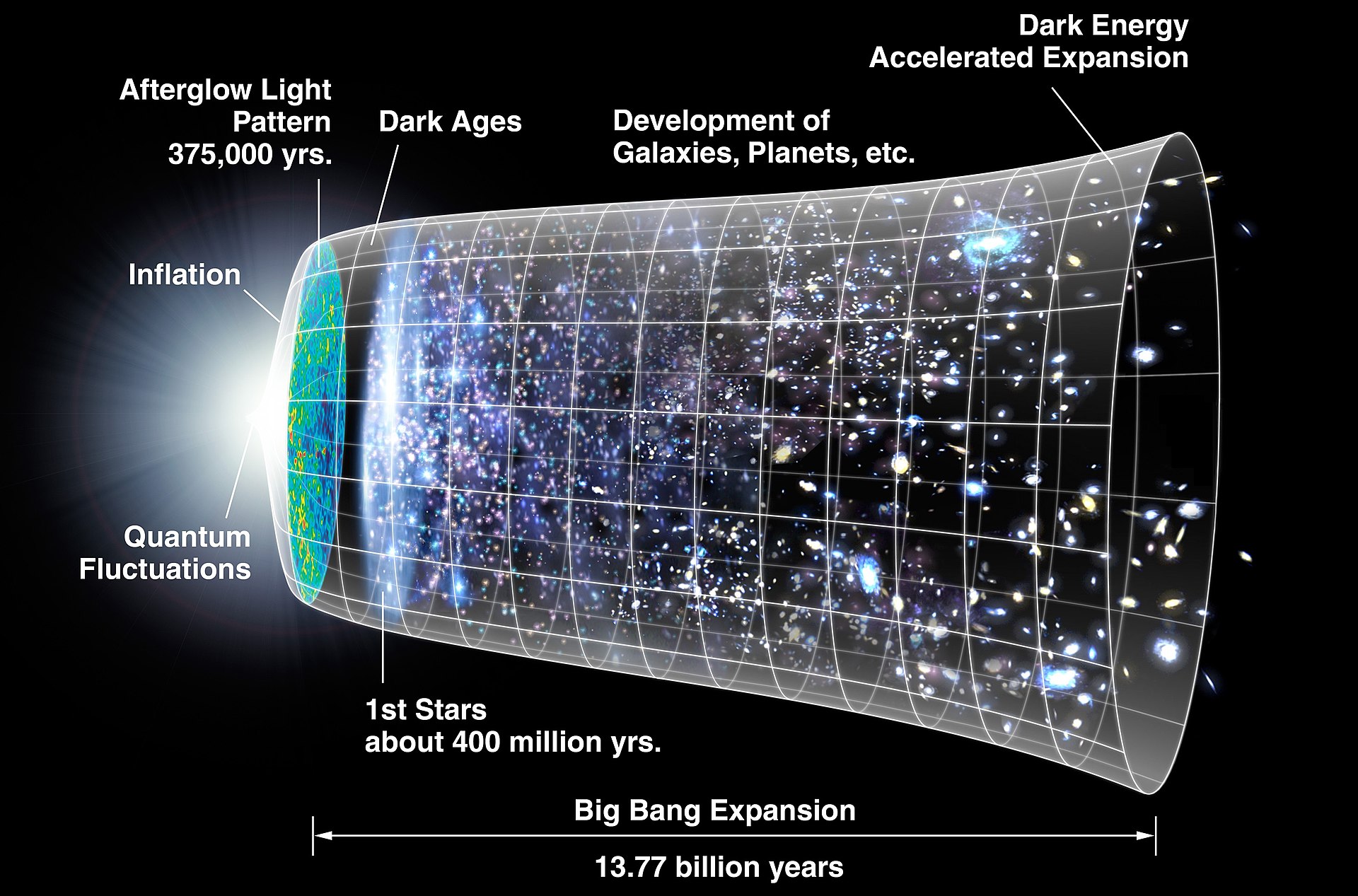
Einstein’s equations indicate that the universe is expanding, a discovery that initially surprised everyone. For decades, scientists believed that the universe exploded from the Big Bang and had been slowing down ever since. However, they were mistaken. Recently, it was discovered that the universe’s expansion is actually accelerating. This mysterious acceleration is driven by what we call dark energy. Approximately 5 billion years ago, this enigmatic force began pushing the universe outward again. In recognition of this groundbreaking discovery in 1998, Saul Perlmutter, Brian Schmidt, and Adam Riess were jointly awarded the Nobel Prize in Physics in 2011.
Today most of the physicists and cosmologists agree that the universe might have evolved from a fiery ball of matter with an initial explosion (Big Bang) and ever since the universe has been expanding outward
Francis P. Xavier, God of the Atoms ( page 94)
The Quran Says :
In this astonishing verse, the Quran tells us not only that the universe has expanded but also that it continues to expand (the Arabic “la-mūsiʿūn” means: we continue to expand it), as Lawrence B. Brown states:
None of this was available prior to the late twentieth century. In the early seventh century, all Muhammad had, other than revelation, was a clear view of the night sky
Laurence B Brown : God Ed
The Relativity of Time

We know from Einstein that time is relative, which means that my clock and your clock may not run at the same rate. Time, or the rhythm of our clocks, depends on factors like acceleration and gravity. If my clock is accelerating or is in a strong gravitational field, it will run more slowly than yours. This concept of time dilation is also reflected in the Quran.
This verse suggests a deep understanding of the relativity of time, indicating that in different realms or under varying conditions, time can pass at different rates. This aligns with the theory of general relativity, which posits that time moves more slowly near a larger mass. Heaven and Hell are much more massive than Earth, and time should pass more slowly there than on Earth.
Another verse that reflects this concept of the relativity of time is:
Throughout history, it was believed that time applied equally to every conceivable place in the universe and across every medium. The Quran offers a different perspective, suggesting a radical understanding of time’s variability. This idea, clarified in the twentieth century through the theory of relativity, reveals significant truths about the nature of time and its dependence on various factors. The Quran’s insight into the relativity of time showcases its alignment with modern scientific discoveries and emphasizes the timeless wisdom contained within its verses.
The age of the universe
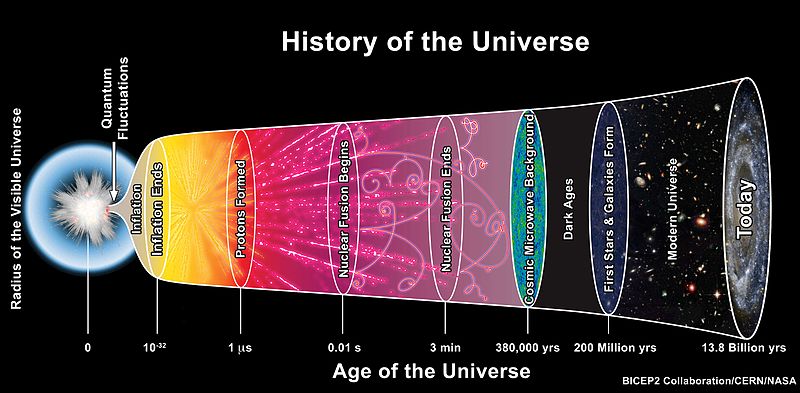
Based on current cosmological estimates, the age of the universe is approximately 13.787 ± 0.020 billion years. The Earth, on the other hand, is estimated to be about 4.54 ± 0.05 billion years old. These estimates are derived from a variety of scientific methods. In contrast, Young Earth creationism (YEC) maintains the belief that the Earth and its lifeforms were created 6,000 to 10,000 years ago, primarily adhered to by Christians and Jews who interpret the creation account in Genesis as six literal days.
Muslims, however, believe that the six days mentioned in the Quran are not earthly days, as the Earth did not yet exist; instead, they are relative days (or periods). This concept is detailed in the chapter on the relativity of time in the Quran.
Only Allah knows the exact frame of reference for these six days. One hypothesis suggests that at the moment of creation, the temporal frame of reference was Allah’s throne, which is far more immense than the entire universe. Consequently, time passes much more slowly there than on Earth, so a day on the throne of Allah could correspond to billions of Earth years. This understanding of the six days of creation exemplifies how the Quran offers a perspective that aligns with modern scientific understanding, contrasting with other divergent popular opinions.
Another interesting aspect to consider is how the Quran describes the age of the Earth relative to the age of the universe: the Quran says the Earth in its current form was created in the last two days, which means that the Earth’s age to the universe’s age ratio is 1/3.
Here is how the Quran describes the steps of creation :
Days 1 -2: Creation of Heaven and Earth
Days 3 -4: Formation of stars and heavens from cosmic smoke
Days 5 -6: Formation of the Earth and all it contains after the creation of the heavens
Our solar system is 4.57 billion years old. The Earth began growing at the same time as the Sun and our neighboring planets, 4.57 billion years ago. However, the universe is 13.7 ± 0.2 billion years old. This puts the age of the Earth at a third of the age of the universe (4.57 billion / 13.7 billion = 1/3).
We are sure that time is relative, meaning that the age of the universe differs for observers whose clocks operate at different rates. For instance, one observer measures the universe’s age at 3 billion years while also measuring the age of the Earth at 1 billion years. The Quran, however, presents this as a ratio (1/3), which remains accurate for any observer, regardless of clock frequency. If the Quran had presented it as anything other than a ratio, it would have been incorrect for varying observers.
Creation from water or fire? Cosmic smoke

The popular belief among many ancient civilizations was that the universe originated from water, a view embraced by Greek philosophers like Thales and Anaximander. Influenced by Greek thought, Christians also adopted this perspective:
For they deliberately overlook this fact, that the heavens existed long ago, and the earth was formed out of water and through water by the word of God
Pierre 2-3 :5
Now, here’s what the Quran says :
The Arabic term is “Doukhan,” which translates to smoke and specifically refers to smoke produced by fire. This suggests that the Quran describes the sky as being formed from a mass of hot smoke rather than water; this idea of high temperature is consistent with the Big Bang model, commonly known as the hot Big Bang.
Recently, astronomers have reached a consensus about the meaning of a verse from the Glorious Quran that refers to the “Doukhan” filling the early sky. Cosmic dust plays a crucial role in forming galaxies, stars, planets, and even life. These dust particles in space serve as the building blocks of comets, planets, and life itself. However, our understanding of their origins remains incomplete (Ben E. K. Sugerman, 2006).
In 2015, physicists found cosmic dust in a galaxy that formed 13.1 billion years ago—just 700 million years after the Big Bang and the universe’s birth. This discovery astonished scientists, who had previously thought that the solid particles constituting cosmic dust did not emerge until much later in the universe’s history.
This new understanding aligns with the Quranic description, which refers to the presence of “Doukhan” (smoke or dust) in the early universe. The verse mentioning this state suggests a deep comprehension of the cosmos, further reinforcing the Quran’s miraculous nature and its relevance to historical and modern scientific discoveries.
“Dust plays an incredibly important role in the history of the universe because it helped to make planets. But not everyone believed that there would have been time for the early galaxies to have produced dust, since according to certain theories this takes many billions of years. For this reason they were rather surprised to see dust as early as 700 million years after Big Bang,”
says project leader Darach Watson, and astrophysicist from the Niels Bohr Institute at the University of Copenhagen.
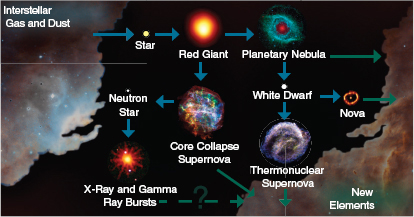
What the Quran states is surprising in the context of 7th-century Arabia. Why didn’t the Quran adhere to the culture of that time? If the Quran was fabricated, why didn’t the Prophet include the ideas of the People of the Book (Jews and Christians), especially since he was eager for them to convert to Islam? The Prophet was merely a messenger of the One who created the universe, and the Quran accurately describes what happened at the beginning of creation.
The Quran and the Earth
The shape of the Earth
At the time of Islam, there were two opposing views on the shape of the Earth:
- The Spherical Earth View:
- Pythagoras in the 6th century BC and Parmenides in the 5th century BC asserted that the Earth is spherical. This belief spread rapidly throughout the Greek world. Around 330 BC, Aristotle, drawing on physical theory and observational evidence, argued that the Earth was spherical and even provided an estimate of its circumference【Dreyer, John Louis Emil (1953) [1905]. A History of Astronomy from Thales to Kepler】.
- The Flat Earth View:
- In passages like Isaiah 40:22, the Bible describes the Earth as a flat disk and the sky as a canopy. This view is supported by interpretations such as Matthew 4:8, where Jesus could see the whole Earth from one high place. Early Christian church fathers like Chrysostom, Archbishop of Constantinople, and Athanasius the Great, Patriarch of Alexandria, embraced the idea of a flat Earth.
The Christian topography (547) by the Alexandrian monk Cosmas Indicopleustes, who traveled as far as Sri Lanka and the source of the Blue Nile, is now widely regarded as the most valuable geographical document of the early Middle Ages. In this document, the author repeatedly expounds the doctrine that the universe consists of only two places: the Earth below the firmament and the sky above. Drawing carefully on the arguments of Scripture, he describes the Earth as a rectangle, 400 days long by 200 wide, surrounded by four oceans, and encircled by four massive walls that support the firmament. The spherical Earth theory was scornfully dismissed as “pagan.”
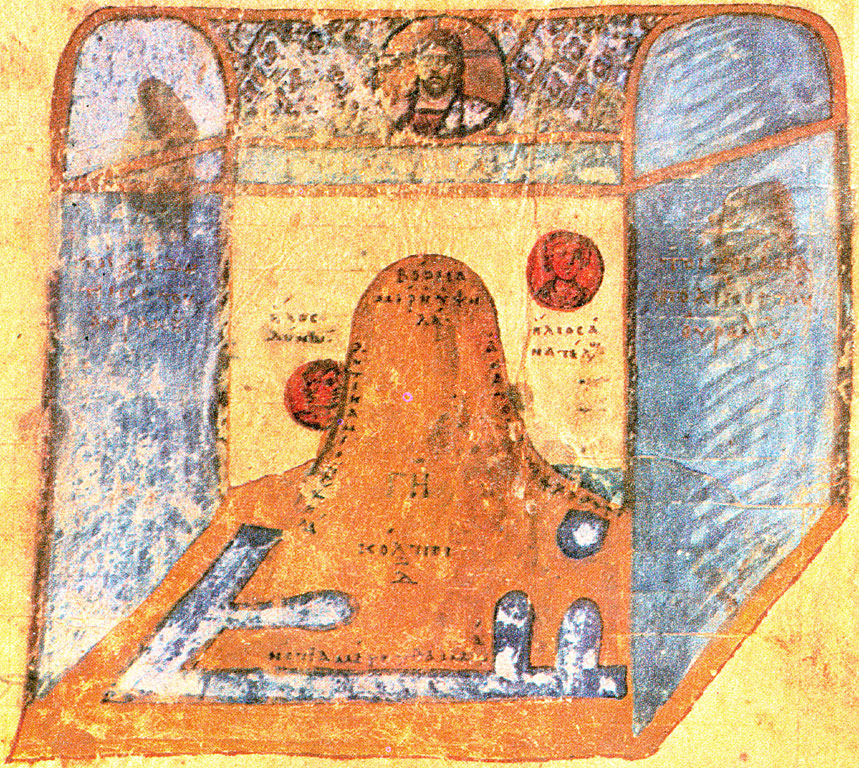
Given these differing opinions, rather than aligning with the dominant Christian perspective, the Quran affirmed the concept of a spherical earth.
The Arabic word “Kura” “كرة” means ball; the Quran used the verb “Yukawer” “يُكَوِّر” meaning to make a ball. The Quran says that the overlap of night and day forms a ball (sphere). The information provided in the above verse, which mentions the fact that day and night envelop each other, includes precise information about the shape of the world. This situation can only be true if the Earth is round. This shows us that the roundness of the Earth has been mentioned in the Quran.
Based on those verses and observations, Muslim scholars of the past believed in a spherical Earth; the 11ᵉ century scholar Ibn Hazm said:
The evidence shows that the Earth is a sphere but the common people say otherwise, our answer by the help of Allah is that none of the Muslim Scholars worthy of being called Imams denied that the earth is round , on the contrary , the evidence from the Quran and Sunnah came with the opposite :
Quran Soura 39 Aya 5 :خَلَقَ السَّمَاوَاتِ وَالْأَرْضَ بِالْحَقِّ ۖ يُكَوِّرُ اللَّيْلَ عَلَى النَّهَارِ وَيُكَوِّرُ النَّهَارَ عَلَى اللَّيْلِ ۖ وَسَخَّرَ الشَّمْسَ وَالْقَمَرَ ۖ كُلٌّ يَجْرِي لِأَجَلٍ مُّسَمًّى ۗ أَلَا هُوَ الْعَزِيزُ الْغَفَّارُHe created the heavens and earth in truth. He wraps the night over the day and wraps the day over the night and has subjected the sun and the moon, each running [its course] for a specified term. Unquestionably, He is the Exalted in Might, the Perpetual Forgiver.this is a clear proof that the earth is wound upon itself, it comes from Kawara al Amama, i.e. made it round, this is a text on the winding of the earth.
Ibn Hazm Treatise on religions and schools of thought.
This is reported in quotations from several Muslim scholars such as Ibn Khordadbeh ( Died 912 ), Ibn Rustah ( Died 903 ), Al-Mas’ûdî ( Died 956 ), Al-Idrisi ( Died 1175 ) supported the theory of the sphericity of the Earth. Estimating Earth’s circumference at 37,000 km (very close to today’s figure of 40,075 km), he asserted:
“The earth is round like a sphere, and water holds and remains there by means of the natural equilibrium that undergoes no change”.
Al Idrissi , [Nuzhat al-mushtaq fî ikhirâq al-âfâq]
The 13ᵉ century scholar Chaikh el Islam IBM Taymiyyah declared that the Earth is spherical and not flat. He stated that the Arabic word falak (Arabic: فَلَكٍ) refers to that which is round. Ibn Abbas said it was like a spinning wheel. The word is used in Quran 21:33 and Quran 36:40Doesn’t
Doesn’t the Quran say that the Earth was flattened?
The words (Spread/leveled) mean that the Earth has been smoothed and spread out before those who walk on its surface; no matter how you walk on the Earth, you find it paved before you. In this regard, Fakhr al-Din al-Razi (d. 1209) states:
“If it is said: do the words ‘And the Earth we spread’ indicate that it is flat? We would answer: Yes, because the Earth, even if round, is a huge sphere, and every little part of this huge sphere, when we look at it, seems flat. Since this is the case, it will dispel what they mentioned of confusion. The proof of this is the verse in which Allah says (interpretation of the meaning): “And the mountains like pegs” [an-Naba” 78: 7]. He called them awtaad (stakes) even though these mountains may have large flat surfaces. And the same applies in this case. “
le Tafsir al-Kabir (al-Razi)
The rotation of the Earth
This passage was difficult for ancient exegeses of the Quran to explain, but now we can deduce the exact interpretation. The fact is that when we look at the mountains, they appear immobile, as if frozen. However, in reality, due to the rotation of the Earth around its axis and the Earth’s orbit around the Sun, the mountains are actually moving like clouds. This is an indication of the rotation of the Earth, which contains the mountains and the entire surface.
For previous human generations, this verse made sense within their understanding, and for us today, the verse takes on new meaning with our modern scientific knowledge. We now know that mountains move as the Earth rotates at a speed of approximately 1600 km/h.
The Shape of Mountains
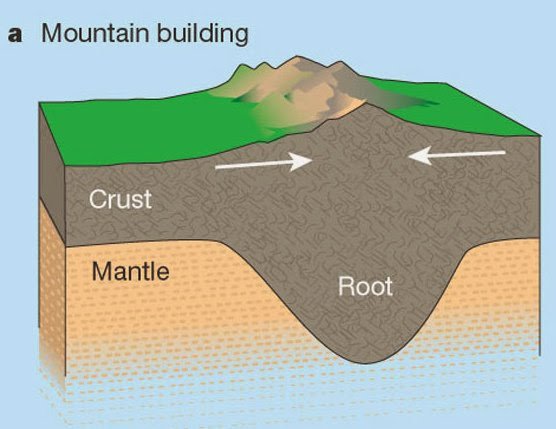
The highest point on the planet is in the Himalayas, on Mount Everest, at 8.8 km above sea level. This mountain has been found to have roots at a depth of around 250 km.
A geological phenomenon known as isostasy corresponds to the hydrostatic equilibrium of the Earth’s crust with the underlying mantle. In simple terms, any elevated part of the Earth’s crust should have a mass equivalent below the Earth’s surface.
This means that an excess of mass seen as material above sea level, as in a mountain system, is due to a deficit of mass, or low-density roots, below sea level. Therefore, high mountains have low-density roots that extend deep into the underlying mantle. The concept of isostasy played an important role in the development of the theory of plate tectonics.
ENcyclopedia britannica
This phenomenon was only discovered 250 years ago and took over a century to understand:
The phenomenon of isostasy was first demonstrated over 250 years ago by French astronomer Pierre Bouguer. During an expedition to Peru in 1736-1743 to measure the length of a terrestrial meridian arc, Bouguer discovered a significant difference in gravity between measurements taken in the Andes and at sea level. A century later, similar observations in the Himalayas were made by George Everest, indicating that the gravitational attraction of mountains appeared systematically weaker than predicted by models considering their excess mass.
Anny Cazenave, “Isostasy, Geology”, Encyclopædia Universalis [online], accessed December 22, 2020. URL:
The Quran describes this phenomenon accurately :
The characteristic of a stake is that the visible part is much smaller than the part buried underground. At a time when men only saw mountains as a pile of stones on the ground, how could an illiterate man have known that these mountains are similar to stakes and that they have a much larger part buried underground?
This description in the Quran aligns with modern geological understanding, showcasing the Quran’s remarkable insights into natural phenomena that were unknown to humanity at the time of its revelation.
Internal waves in the ocean

This verse describes a person at the bottom of the ocean, with waves above him, and beneath those waves are other waves on the ocean’s surface. While we all know about waves on the ocean’s surface, the concept of waves beneath waves is a more recent discovery.
The largest waves observed on the ocean surface are between 20 and 30 meters high. Rodrigo Koxa, a Brazilian surfer who surfed a wave 24.4 meters high, holds the record for the biggest wave surfed by a man. However, these figures pale in comparison to what lurks beneath the ocean’s surface: a phenomenon known as “internal waves.”
Internal waves occur hundreds of meters below the ocean’s surface and can be monstrous in height, generally over 100 meters and sometimes reaching up to 500 meters. The Norwegian explorer Fridtjof Nansen first noticed this phenomenon at the beginning of the 20th century when he observed how difficult it was for his ship to make headway even on the calmest seas.
This animation shows the density layers of the South China Sea disturbed by the regular tidal flow in the Luzon Strait. These lead to large-amplitude internal waves (shown in red underwater and in white when viewed from above), radiating westwards to the Chinese continental shelf :
The famous American oceanographer Walter Munk said:
Walter Munk
Internal waves occur at the boundaries between the warmer, lighter water and the colder, heavier water below ….. Internal waves in the ocean are remarkably high; the boundary between the upper and lower oceans is several hundred meters high and can rise and fall by more than 100 meters, but you’d never know it at the surface.
These internal waves are caused by the differences in water density at different depths, which create waves within the ocean itself, much like the waves on the surface. This scientific discovery, made long after the Quran was revealed, aligns perfectly with the verse’s description, showcasing the Quran’s remarkable insights.
The abyss: light in the deep sea
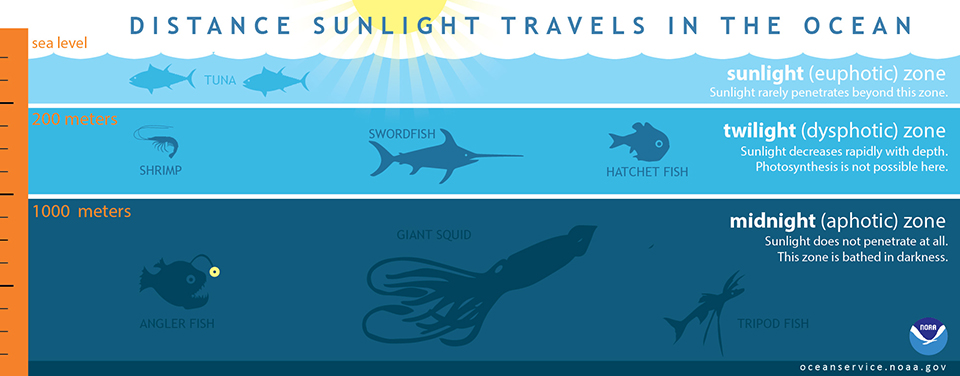
Let’s take up the same previous verse that details the phenomenon of internal waves:
This verse describes the scene of a man at the bottom of the ocean, lying below the inner waves, which lie below the outer waves, and there are clouds above them. “Doloumat” is the Arabic term for a state of absolute darkness where you can’t even see your hand.
It is what’s known as the abyss, according to the United States Department of Oceanography:
The ocean is divided into three zones based on depth and light level. The upper 200 meters of the ocean is called the euphotic, or “sunlight” zone. This zone contains the vast majority of commercial fisheries and is home to many protected marine mammals and sea turtles.
Only a small amount of light penetrates beyond this depth.
The zone between 200 meters and 1,000 meters is usually referred to as the “twilight” zone, but is officially the dysphotic zone. In this zone, the intensity of light rapidly dissipates as depth increases. Such a minuscule amount of light penetrates beyond a depth of 200 meters that photosynthesis is no longer possible.
The aphotic zone exists in depths below 1,000 meters. Sunlight does not penetrate to these depths and the zone is bathed in darkness. The aphotic zone is further subdivided into the bathypelagic zone (or midnight zone) between 1,000 and 4,000 meters, the abyssopelagic (or the abyss) between 4,000 and 6,000 meters, and the hadopelagic zone (or hadal zone) 6,000 meters and deeper.
United States Department of Oceanography
The world record reached in 2016 for free apnea immersion is 124 meters, man has never been able to exceed the 1000 meter limit even using dynamic apnea with fins, this means that at no time in history has man been able to reach the depths of the ocean where there is talk of absolute darkness.
How could the Prophet Muhammad(ﷺ) have known all this information?
The Quran and the Human body
The number of joints in the human body
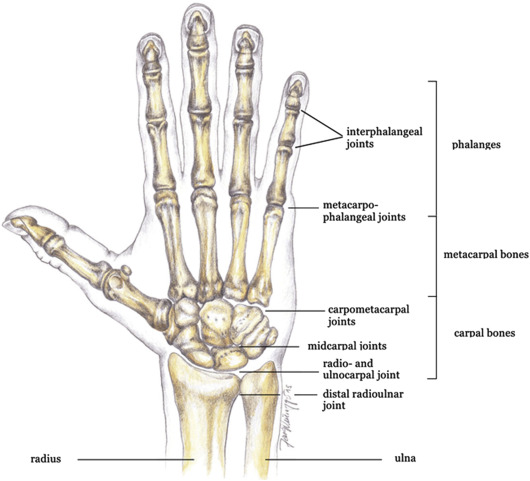
In a tradition of the Prophet Muhammad(ﷺ), he presents an astonishing fact about the human body:
There are 360 joints in the human body.
A joint is the point of attachment of two bones. Three types of joints are found in the human body
https://homework.study.com/explanation/how-many-joints-are-there-in-the-human-body.html
This information was unavailable during the time of the Prophet and has only been discovered through recent scientific advancements. Some joints are situated between tiny bones that cannot be detected without specialized equipment. The human skull alone comprises 84 joints, including 20 in the ears.
Some claimed that this knowledge was already known to the ancient Chinese, but after researching old Chinese traditions, it was found that the Chinese held a superstitious belief: there are as many joints in the human body as there are days in the year :
In the year there are 365 days , human beings have 365 joints , on the earth there are high mountains , human beings have shoulders and knees …In the year there are twelve months; human beings have their twelve major joints .
Sources of Chinese Tradition: From Earliest Times to 1600 (page 276)
As mentioned in the quote above, the Chinese referred to 365 joints (not 360), and this number is linked to a superstitious belief. If the Prophet Muhammad(ﷺ) had been inspired by the Chinese, he would have likely adopted their figure of 365—which is incorrect—and their superstition linking the number of joints to the days of the year, which is also incorrect.
The Skin

The burning sensation on the skin is transmitted to the brain via nerves. If the nerve endings in the outer skin are damaged, no signal is transmitted to the brain, and no burning sensation is felt. The Quran mentions that those who burn in Hell will have their skins replaced every time they are roasted so they can continually feel the pain:
How could an illiterate person who lived 1400 years ago have known that only the outer skin could feel burns? After studying those verses, Professor Tejatat Tejasen, Chairman of the Department of Anatomy at Chiang Mai University in Thailand and former Dean of the Faculty of Medicine at the same university, declared at the Eighth Saudi Medical Conference in Riyadh:
“For the past three years, I have been interested in the Quran… From my studies and what I have learned at this conference, I believe that everything reported in the Quran fourteen centuries ago is the truth, which can be proven by scientific means. As the Prophet Mohammed could neither read nor write, he is necessarily a messenger who transmitted this truth, which was revealed to him for edification by the one who is the Creator. That Creator is God. Therefore, I believe it is time for me to declare ‘La ilaha illa Allah, there is no god worthy of worship besides God, Muhammadur rasoul Allah, Muhammad is the messenger (prophet) of Allah (God).'”
Professor Tejatat Tejasen, Chairman of the Department of Anatomy at Chiang Mai
Finally, he congratulated the conference’s successful organization and expressed his gratitude for the scientific and religious insights gained. He stated that the most precious thing he gained was declaring his faith and becoming a Muslim.
Altitude Sickness

The Quran describes what happens when a person ascends into the sky, their chest become “narrow and uncomfortable”, as if they were striving to reach the heavens. This description aligns with the modern understanding of altitude sickness, also known as acute mountain sickness (AMS). AMS is a syndrome caused by rapid ascent to high altitudes, lack of acclimatization, and varying degrees of personal sensitivity. The onset of mountain sickness depends on altitude, ascent speed, and individual susceptibility. It is rare below 2,500 meters.
Altitude sickness was recognized as early as the 16th century. In 1878, French physiologist Paul Bert demonstrated that the symptoms of altitude sickness result from oxygen deficiency in the body’s tissues. Mountaineers, pilots, and people living at high altitudes are most likely to be affected.
Encyclopaedia Britannica Source
The Quran alludes to the tightness of breathing experienced by those who venture to high altitudes:
Some might argue that the Quran simply describes the known mountain climbing experience. However :
- If the Prophet was describing a known experience, he would have likely said “as if he were striving to climb a mountain” rather than “to heaven.” Climbing a mountain would have been more relatable to the Arabs of the time.
- The highest mountain in Arabia is only 3,500 meters high (the Sarawat Mountains). Most mountains are no higher than 2,500 meters. Hence, the likelihood that the Arabs of the time would have experienced mountain sickness is very low, especially as leisure climbing was simply unknown at the time, especially in the Middle East. Those who lived in the mountains were adapted, and for those who sought higher altitudes to graze their flocks, their progress upwards was so slow that their bodies had time to adapt.
The Quran and embryology
Humans have always been intrigued by questions such as where they come from and how they develop before birth. From the earliest records, we know that primitive peoples understood that the birth of a baby was the result of sexual union or intercourse. However, the understanding of human prenatal development was based on speculation and mysticism for many centuries.
Many theories were put forward—some correct, some wrong, and some quite astonishing—and debates raged on topics ranging from the participation of women to the stages of creation.
When the Quran touched on embryology amidst this mass of divergent ideas, it provided precise descriptions that aligned with modern scientific understanding. The Quran described each phenomenon accurately, even detailing aspects that only the invention of the microscope could reveal. Below, we explore the main questions related to the creation of man, the surrounding theories, and the answers provided by the Quran.
Creation from Mixed Semen
Throughout history, various theories have been proposed to explain human conception and embryonic development, often based on speculation and limited scientific understanding.
Aristotle’s View: Male semen + Female menstruation
Aristotle’s Theory: Aristotle believed that the contributions of male and female parents were quite distinct. He regarded the female contribution as menstrual fluid, which provided the substance for the embryo. In contrast, the male sperm provided the form and principle of movement, similar to how rennet curdles milk to make cheese. The Bible echoes this idea: “Did you not pour me out like milk, and curdle me like cheese? You clothed me with skin and flesh and knit me together with bones and sinews. You have granted me life and favor, and your care has preserved my spirit” (Job 10:10-12)
Galen’s View: Male semen + Female semen + Female menstruation
Hippocrates and Galen’s Theory: Hippocrates and Galen described human conception as originating from two seeds, one from the male and one from the female. Galen contended that sperm was primarily responsible for forming arteries, veins, and nerves, while menstrual blood was essential for the physical development of the embryo.
You can read more on this research page by the State University of New York at Binghamton: THE POWER OF SEMEN. ARISTOTLE AND SOMGALEN’s FALLACIES
These views persisted until the 19th century, when significant scientific advancements were made. Karl Ernst von Baer discovered the mammalian ovum in 1827. Oskar Hertwig observed the fusion of spermatozoa with ova (from a starfish) in 1876, leading to a more accurate understanding of human conception.
Quranic Perspective
The Quran, which was revealed over 1400 years ago, accurately described human conception and corrected these primitive views. It stated that the fetus is created from a mixture of sperm and a drop, indicating contributions from both the male and female:
The term used here, “Nutfah Amshaj,” means a mixed drop, interpreted by scholars to refer to a combination of male and female fluids. This suggests that the fetus is formed from a mixture of male sperm and female ovum, aligning with modern embryology.
Islamic Scholarship
Muslim scholars have long recognized the Quranic description of human conception. For example:
Ibn Hajar (d. 1449)
- “The people of anatomy have asserted that semen coagulates menstrual blood, and the hadiths of the chapter invalidate this.”
Al-Qurtubi (d. 1273)”
- “They asserted that the fetus is formed solely from the fluid of the male. The truth is that creation is from both the male and female fluids because Allah Almighty said: ‘Indeed, We created man from a mixture of sperm and drop.’ This is an explicit text that requires no interpretation.”
Conclusion
The Quran’s description of human conception as a mixture of male and female contributions corrected the primitive views of the time and aligns with modern scientific understanding. This remarkable accuracy, revealed in a period devoid of advanced scientific knowledge, underscores the divine origin of the Quran and its timeless relevance.
Pre-formed Man or Creation by Stages
One of the oldest debates, dating back to Greek times, concerns how the fetus evolves. Aristotle (384-322 BC) described preformation and epigenesis as two historically important developmental models.
Preformation Theory: According to preformationist theories, an embryo or miniature individual pre-exists in the mother’s egg or the father’s sperm and begins to develop when properly stimulated. Some preformationists believed that God had formed all embryos that would one day develop at creation. This theory was popular in the 17th and 18th centuries and allowed people to believe in a clockwork world where tiny people existed in sperm. Those tiny people also contained even tinier people in their sperm.
Epigenesis Theory: The theory of epigenesis, favored by Aristotle, assumes that the embryo begins as an undifferentiated mass and that new parts are added during development. Epigenesis contrasted preformationism, suggesting that neither sperm nor egg were independently human or alive but that they acquired “vital essence” during pregnancy.
Refutation of Preformationism: The Quran refutes the preformationist thesis by describing the exact stages of human development and also through the following verse, which speaks of “creation after creation”:
Interestingly, the Quran did not adopt Aristotle’s error regarding the development of the human body, where he believed that the upper body formed before the lower body.
Aristotle’s View: “Now, the upper part of the body is the first to be defined during the formation of the embryo; the lower part receives its growth over time.”
Aristotle, Generation of Animals, translated by A. L. Peck, Heinemann, 1942 edition.
Conclusion
the Quran’s descriptions of human embryonic development not only refute the preformationist views but also align with the modern scientific understanding of how a fetus develops in stages. These descriptions, which were revealed over 1400 years ago, provide accurate and detailed knowledge highlighting the Quran’s divine origin and its timeless relevance.
Stages of Embryonic Development According to the Quran
The Quran accurately describes the stages of embryonic development (the first 8 weeks):
Stage 1: Nutfah (Days 1 to 7, Carnegie stages 1 to 4)
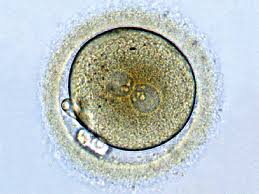
The term “Nutfah” (نُطْفَةً) has been interpreted as sperm or spermatozoon. Still, a more accurate interpretation would be the zygote dividing to form a blastocyst implanted in the uterus(a resting place).
Stage 2: Alaqa (Days 7 to 23, Carnegie stages 6 to 10)

- The word “Alaqah” (عَلَقَةً) refers to a leech, or bloodsuckerIt’s an apt description of the human embryo from days 7 to 23 as it clings to the endometrium (wall) of the uterus, similar to how a leech clings to the skin.
- Just as the leech draws blood from the host, the human embryo draws blood from the pregnant endometrium. Note that there is no menstrual blood or a dwarf fetus growing over time. The Quran mentions none of these myths that were prevalent in its time.
Stage 3: Mudgha (Days 23 to 35, Carnegie stages 11 to 14)
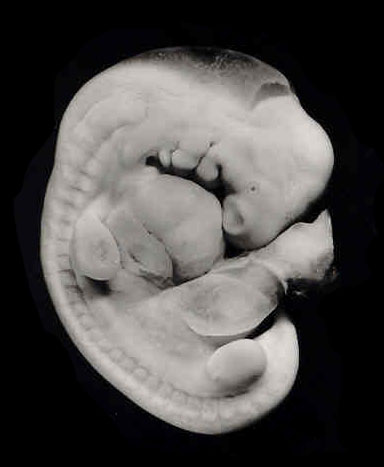
- The embryo transitions from the “Alaqa” stage to the “Mudghah” stage between days 24 and 26.
- The Arabic word “mudghah” (مُضْغَةً) means a chewed substance or chewed piece. Towards the end of the fourth week, the human embryo somewhat resembles a chewed piece of flesh. The chewed appearance results from the somites, which resemble teeth marks. The somites represent the beginnings or primordia of the vertebrae, and by 28 days, around 30 pairs of somites have formed.
Stage 4: Cartilage and Muscles
- From the “Chewed mass” stage onwards, bones and muscles are formed. This is consistent with embryonic development. First, the bones form as cartilage models, and then the muscles (flesh) develop around them from the somatic mesoderm.
Stage 5: Another Creation (Fetus)
- This involves bones and muscles leading to the formation of another creature (خَلْقًا آخَرَ). This may refer to the human-type embryo that forms at the end of the eighth week.
- At this stage, it has distinctive human characteristics and possesses the primordia of all internal and external organs and parts. After the eighth week, the human embryo is called a fetus. This may be the new creature to which the verse refers.
Conclusion
The Quran describes embryonic development remarkably accurately, detailing the stages from the zygote to the fully formed fetus. These descriptions align closely with modern scientific understanding and highlight the Quran’s timeless wisdom and divine origin. The stages outlined in the Quran not only refute the preformationist theories of its time but also accurately depict the process of human development as understood today through the field of embryology.
Is Embryonic Development in the Quran Inspired by Galen?
One of the main allegations made by critics of the scientific miracles in the Quran is that the stages of embryonic development described in the Quran were borrowed from Galen, who also outlined stages of embryonic evolution. However, a closer examination reveals that the stages described by Galen have no substantial connection to the stages detailed in the Quran
Galen’s Description of Embryonic Development:
- First Stage:
- Galen describes the initial stage where the sperm form (σπέρματος) dominates. At this stage, he refers to the animal’s form as sperm, not yet a fetus.
- Note that Galen’s sperm here refers to the visible seed liquid, not spermatozoa and ovum.
- Second Stage:
- This stage involves the embryo filling with blood, with the heart, brain, and liver becoming distinguishable, although still shapeless. Galen calls this form fetus as it takes on a more solid shape.
- Note: Galen observed these stages with the naked eye during dissections and abortions.
- Third Stage:
- Here, the main body parts start forming distinctly, including the stomach and limbs, which Galen compares to twigs growing into branches.
- Note: This stage indicates a nearly formed body, visible without microscopic tools.
- Fourth Stage:
- This final stage involves the complete formation of limbs and all body parts. Galen describes the fetus as a child at this stage, already capable of movement.
- Note: This stage is likely well into the second trimester when the fetus is visibly developed.
Key Points of Galen’s Descriptions:
- Galen attributed his stages to Hippocrates and observations from dissections and abortions.
- His stages involve descriptions visible to the naked eye, not microscopic stages.
- The stages he described occur later in fetal development, beyond the sixth week.
Comparison with the Quranic Description:
The Quran provides a more detailed and accurate account of embryonic development that aligns with modern embryology:
Quranic Stages of Development:
- Nutfah (Days 1 to 7, Carnegie stages 1 to 4):
- Zygote: Fertilized ovum developing into a blastocyst implanted in the uterus
- “Nutfah” is interpreted as a drop of sperm or zygote.
- Alaqa (Days 7 to 23, Carnegie stages 6 to 10):
- Embryo resembling a leech: The embryo clings to the uterine wall and draws blood, much like a leech.
- The Quran describes the embryo as “Alaqah,” which means leech-like.
- Mudgha (Days 23 to 35, Carnegie stages 11 to 14):
- Chewed substance: The embryo resembles a chewed piece of flesh due to somites, the precursors to the vertebrae.”
- “Mudghah” means chewed substance, describing the appearance accurately.
- Formation of Bones and Muscles:
- Bones form first as cartilage models, followed by the development of muscles around them.
- The Quran mentions the formation of bones followed by clothing with flesh.
- Another Creation (Fetus):
- By the eighth week, the embryo has distinctive human characteristics and the primordia of all organs.
- The Quran describes this stage as “another creation.”
Conclusion: The stages described in the Quran are based on precise scientific knowledge, which is fundamentally different from Galen’s descriptions; Galen’s stages were based on visible observations during dissections and abortions, while the Quran describes stages that are not visible to the naked eye and align with modern embryological findings. The accurate and detailed stages in the Quran refute the idea that its descriptions were inspired by Galen or any other ancient source, highlighting the Quran’s divine origin and timeless relevance.
Hamza Andreas Tzortzis, a Greek-British author who converted to Islam in 2002, wrote an article in response to this same allegation concerning embryology, and I’d like to quote the conclusion he reached at the end of his reply:
In response to this, it should be noted that in the light of the above evidence, this claim is irrational. To assert that the Quran has borrowed from Galenic embryology in the light of the striking differences outlined above is to assert that evolution and creationism are similar because they address the same area of science. Many questions are raised that refute this assertion, such as: how did the Quran, and by extension the Prophet Muhammad ﷺ, know what was right, discard what was wrong and ensure that the entire Quranic account of the development of the human embryo was in line with reality?
Hamza Andreas Tzortzis in DID THE PROPHET MUHAMMAD PLAGIARISE ANCIENT GREEK EMBRYOLOGY?
Bones Before Muscles or the Opposite?
A common objection to the Quran’s description of embryonic development is the claim that the Quran says bones are formed before muscles, while modern embryology has proven the opposite. This statement is unfounded, as embryology confirms the sequence described in the Quran.
Quranic Description:
Embryological Evidence:
In the Mudgha stage, the somites form, which are clusters of mesoderm cells that will later differentiate into bones, muscles, and skin.
Somites Development:
- Somites: These are masses of mesoderm distributed along both sides of the neural tube, which will eventually differentiate into the dermis (dermatome), skeletal muscle (myotome), and vertebrae (sclerotome).
- During the 4th week of gestation, 42 somites are formed, comprising four occipital, eight cervical, 12 thoracic, and five lumbar somites, with the rest being sacrococcygeal.
Sequence of Development:
- Sclerotome Differentiation:
- The sclerotome differentiates first and gives rise to the vertebrae and ribs. These cells migrate and condense around the notochord and neural tube to form the cartilage models of the vertebrae and ribs, which later ossify into bones.
- Dermomyotome Formation:
- The remaining part of the somite, known as the dermomyotome, divides into the dermatome and myotome. The myotome further differentiates into muscles.
Scientific Reference :
- Syringomyelia: A Disorder of CSF Circulation (page 54).”
- The sclerotome differentiates from the other two components. Hence, the term dermomyotome is used to describe the combined dermatome and myotome.
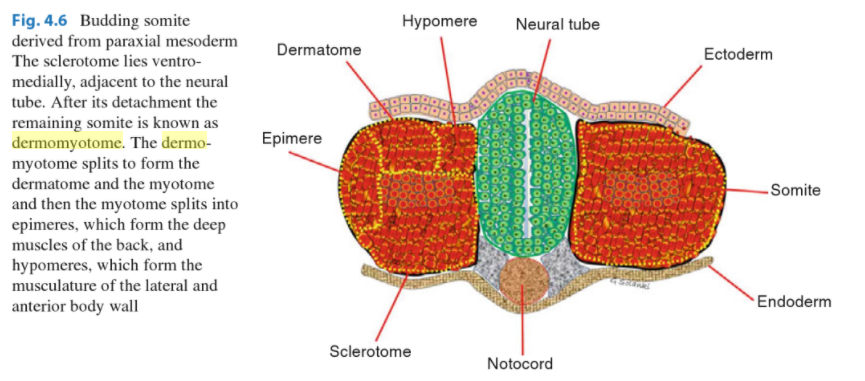
Arabic Terminology:
The Arabic word used for bones is “ʿiẓam” (عِظَام), which can refer to any structure surrounded by flesh, including cartilage and sclerotome (bone cells) that are later surrounded by myotomes (muscle cells).
Lisan al-Arab Dictionary
- “Al-ghuḍrūf: Any soft, flexible bone in any part of the body” (لسان العرب)
- The term is applicable for both cartilage and sclerotome, supporting the Quranic description of bones being formed before muscles.
Conclusion:
The embryological sequence described in the Quran is consistent with modern scientific understanding. The initial formation of sclerotomes (which later ossify into bones) occurs before the differentiation of myotomes (muscles). This supports the Quranic description that bones are formed first, followed by the clothing of bones with flesh (muscles), highlighting the Quran’s accuracy in describing human development.

